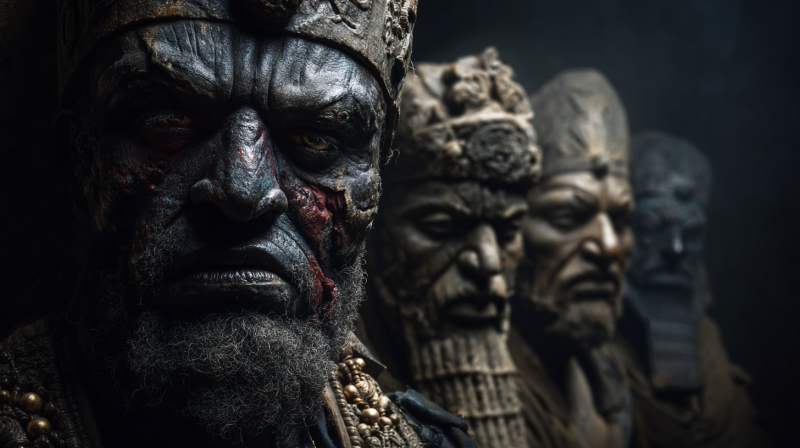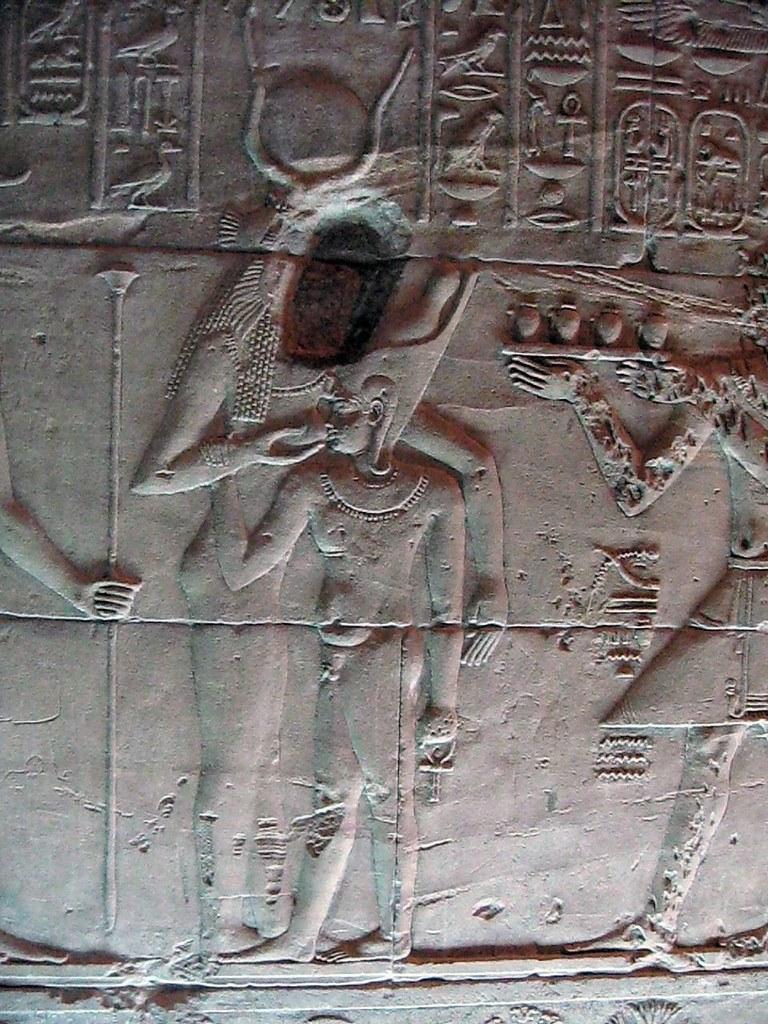One deity stands supreme in the heart of Japan’s rich tapestry of mythology, her brilliance illuminating the very fabric of existence. She is Amaterasu Ōmikami, the goddess of the sun and the queen of the celestial realm. More than just a divine figure, Amaterasu embodies light, order, and the divine lineage of Japan’s emperors. Her story is one of conflict, darkness, and ultimate restoration—a tale that has shaped the spiritual and cultural identity of Japan for centuries.
The Birth of Amaterasu
The origins of Amaterasu are found in the Kojiki (Records of Ancient Matters) and the Nihon Shoki (Chronicles of Japan), two of the most revered historical texts in Japanese mythology. According to legend, Amaterasu was born from the left eye of the primordial god Izanagi when he performed a purification ritual after his journey to the underworld. Her two siblings, Tsukuyomi, the moon god, and Susanoo, the storm god, were also born from Izanagi’s cleansing, emerging from his right eye and nose, respectively.
From the moment of her birth, Amaterasu’s radiance was undeniable. Recognizing her immense power, Izanagi entrusted her with dominion over the heavens, placing her in charge of Takamagahara, the High Plain of Heaven. Yet, even the celestial realm was not free from discord, for her tempestuous brother, Susanoo, would soon challenge her rule.
The Feud Between Amaterasu and Susanoo
Susanoo, reckless and wild, was consumed by a deep sorrow after his father Izanagi banished him from the heavens. Before departing, he sought to bid farewell to Amaterasu. However, his violent and unpredictable nature made her wary. To prove his sincerity, Susanoo proposed a divine contest: each would create deities from objects belonging to the other, and the one who produced the most noble offspring would be declared victorious.
Amaterasu accepted the challenge and fashioned three female deities from Susanoo’s sword, while Susanoo created five male deities from Amaterasu’s beaded necklace. Declaring herself the winner, she believed the purity of the female deities proved her own divine virtue. Yet, Susanoo, filled with rage and defiance, erupted into a destructive frenzy, wreaking havoc across Takamagahara.
He trampled over Amaterasu’s rice fields, defiled her sacred weaving hall, and, in an act of utter blasphemy, flung the flayed hide of a celestial horse into the hall, causing the death of one of her attendants. Devastated and horrified by her brother’s actions, Amaterasu retreated into the cave of Amano-Iwato, sealing herself within and plunging the world into an endless night.
A World Without the Sun
With Amaterasu hidden from sight, darkness engulfed the world. Crops withered, the gods despaired, and chaos threatened to consume both heaven and earth. The world without its sun goddess was a lifeless void, a bleak and desolate place devoid of warmth and vitality. The kami (deities) of Takamagahara convened to devise a plan to lure Amaterasu from her self-imposed exile.
They gathered at the entrance of the cave, strategizing ways to restore light to the world. The wisest among them, Omoikane, the deity of wisdom, proposed a grand spectacle—one that would stir the curiosity of the sun goddess and draw her forth from the shadows.
The Dance That Restored Light
At the mouth of Amano-Iwato, the gods erected a sacred mirror and hung dazzling jewel ornaments from a nearby tree. They then called upon Ame-no-Uzume, the goddess of mirth and revelry, who stepped forward with an audacious plan. She overturned a wooden tub, stood upon it, and began to dance wildly, shedding her garments as she moved.
The gods erupted into uproarious laughter at her uninhibited performance. The sounds of joyous revelry reached the depths of the cave, stirring Amaterasu’s curiosity. Unable to resist, she approached the entrance and, ever so cautiously, peeked out. At that moment, the gods raised the sacred mirror before her, reflecting her radiant image. Mesmerized by her own light, Amaterasu stepped further out of the cave.
Seizing the opportunity, the strong-armed deity Tajikarao yanked the boulder away from the entrance, ensuring that Amaterasu could not retreat again. As her luminous presence returned to the world, the sun shone once more, restoring harmony and life to all existence.
Legacy of Amaterasu
Amaterasu’s return marked the triumph of light over darkness, order over chaos. Her divine authority was reaffirmed, and Susanoo, as punishment for his misdeeds, was banished from the heavens.
Beyond mythology, Amaterasu’s legacy extends into Japan’s imperial history. The Yamato clan, the ancestors of Japan’s emperors, claimed direct descent from her, solidifying their divine right to rule. Her grandson, Ninigi-no-Mikoto, was sent to earth to establish the imperial lineage, carrying with him the three sacred regalia: the mirror (Yata no Kagami), the jewel (Yasakani no Magatama), and the sword (Kusanagi no Tsurugi). These treasures remain central to the enthronement of Japanese emperors to this day.
Amaterasu’s influence endures in Shinto practices, particularly at her most revered shrine, the Ise Grand Shrine (Ise Jingū). Pilgrims from all over Japan visit this sacred site to pay homage to the goddess whose light sustains the nation.
Conclusion
The myth of Amaterasu and her retreat into Amano-Iwato is more than just an ancient tale—it is a story of resilience, redemption, and the enduring power of light. Her legend continues to illuminate the cultural and spiritual landscape of Japan, reminding us that even in the darkest times, the promise of dawn remains.
References
- Aston, William George. Nihongi: Chronicles of Japan from the Earliest Times to A.D. 697. Tuttle Publishing, 1972.
- Philippi, Donald L. Kojiki: An Account of Ancient Matters. Princeton University Press, 1969.
- Matsunaga, Daigan & Alicia. Foundation of Japanese Buddhism: The Aristocratic Age. Buddhist Books International, 1990.
- Picken, Stuart. Shinto: Japan’s Spiritual Roots. Tuttle Publishing, 2002.





